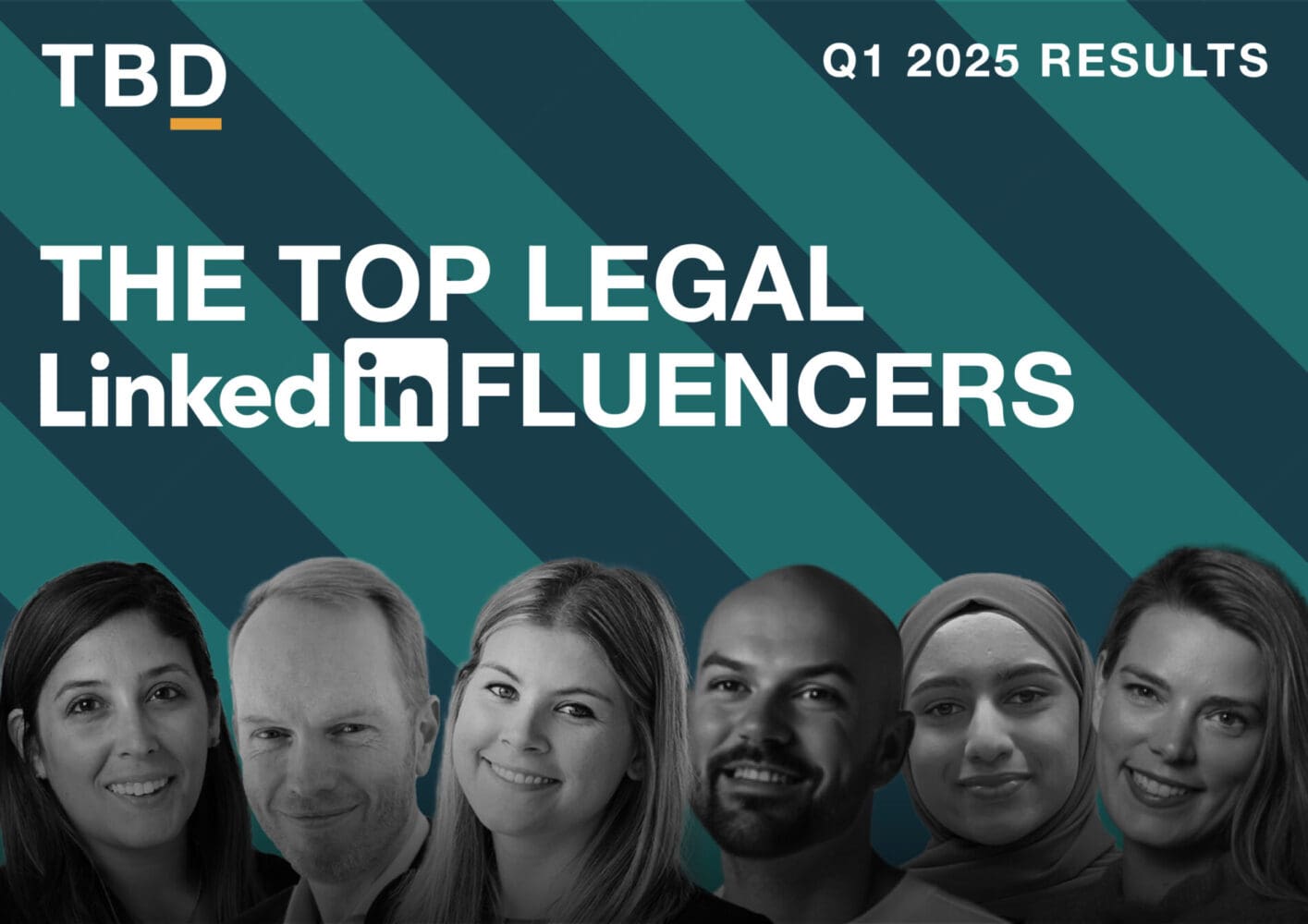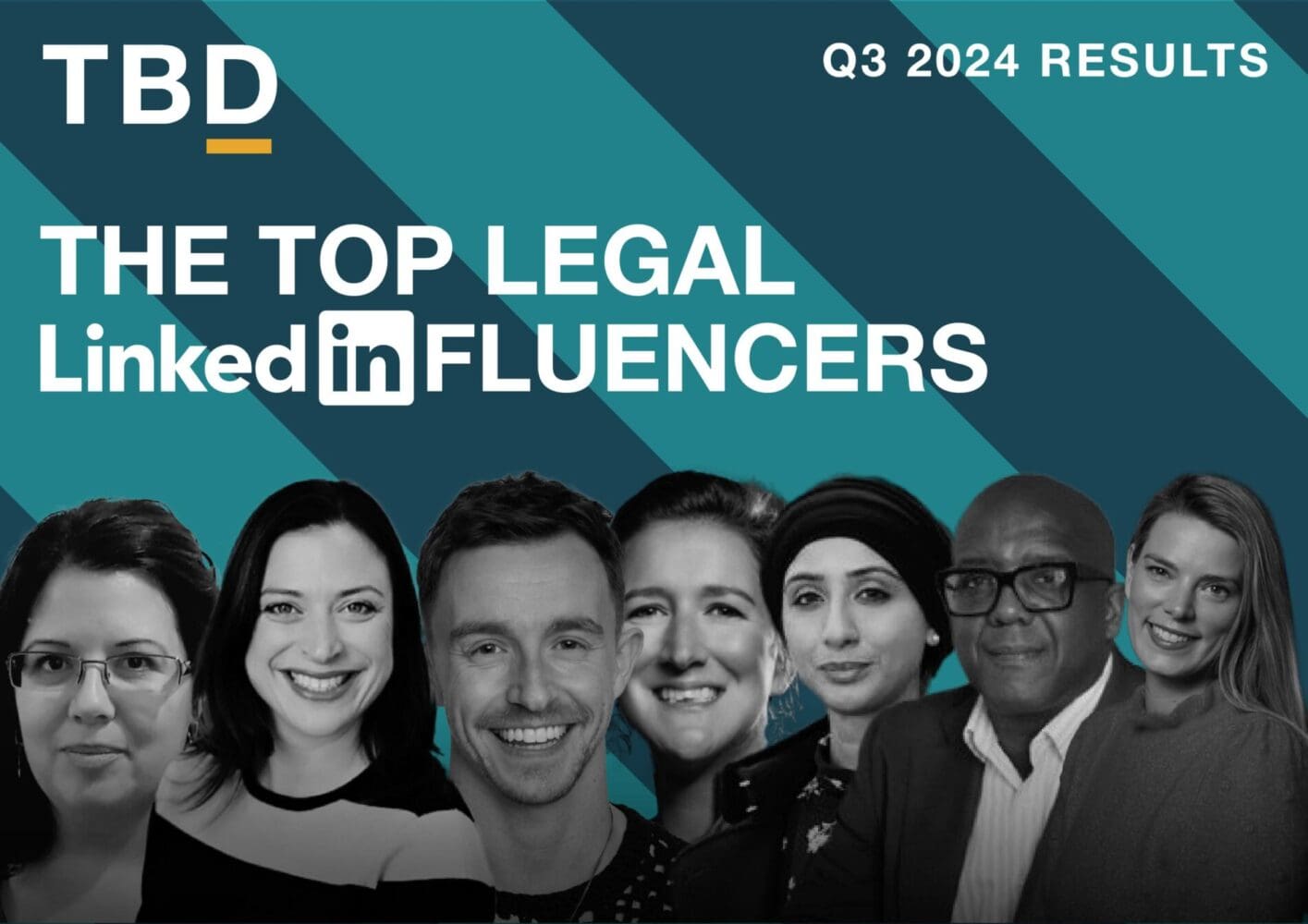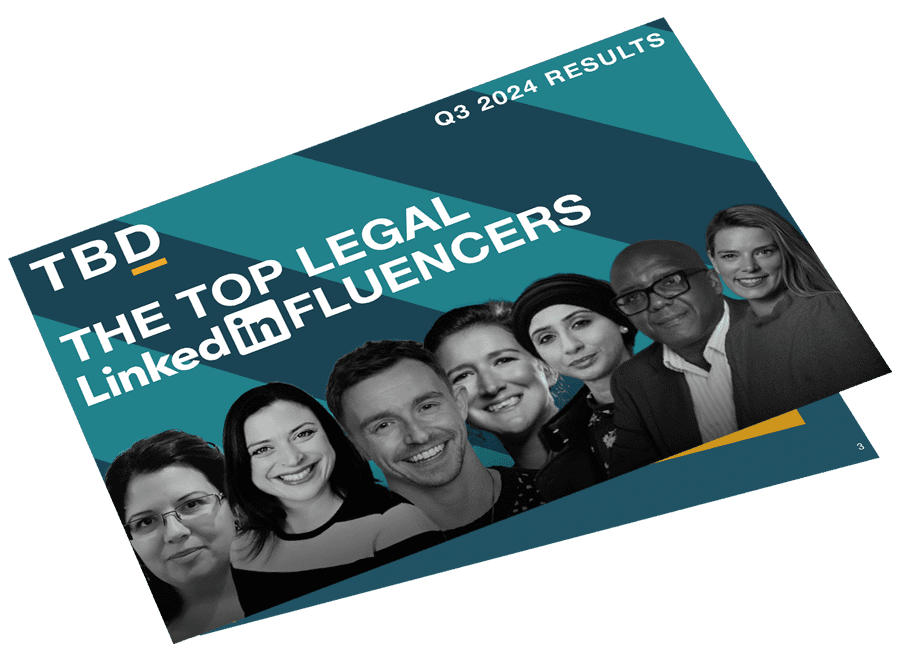2024: the year for demonstrable return on investment in social media
No ifs, no buts: when it comes to effectively building your personal brand, social media isn’t a nice-to-have, but a commercial imperative in a post-Covid era. Why? Because the way we network with colleagues and clients will never be the same as it was pre-pandemic.
Which is why a new generation of legal professionals has identified the huge inherent potential of social media platforms, which cost very little to use and allow them to remain front of mind over extended periods of time and at scale in this new era of remote and hybrid working – all without ever having to leave their desk. Or, indeed, their sofa.
A savvy bunch of leaders has also realised that LinkedIn, in particular, is a form of hybrid communication: it has done away with the old distinction of internal comms and external comms by simultaneously addressing both audiences. It also underscores the sincerity and importance of what they post, as it has the additional weight of authenticity that comes from it being issued via their personal account – in other words, it allows them to truly own the message.
But here’s the crucial thing: the message has to hit the mark in order to be effective. Working assumption: many of you have been invited to a LinkedIn training session. Many of you have attended. Indeed, I’ve trained a fair few of you myself. So here’s a question for you: have you seen a return on that investment?
If the answer is ‘not yet’, then fear not: I think that a lot of people feel that way. It’s not always easy to get LinkedIn usage right. It requires a careful balancing act of showing personality whilst staying within the tramlines of professionalism and professional obligations, not oversharing, and not falling foul of SRA guidelines.
But when you do find the formula that works for you and your audiences, and you continuously fine-tune it, it will make a material difference to your standing at your firm and in the market, to your employability, and therefore to the work you win – all through building a compelling and unique personal brand.
Just ask Jen Shipley, an Associate Solicitor at Irwin Mitchell, who routinely features in the top five of our LinkedInfluencers ranking and is a world-class LinkedIn user by anyone’s definition:
“My professional practice has completely evolved through my use of Linkedin. A significant proportion of my caseload is now LinkedIn referrals or word of mouth. It’s opened so many doors for me professionally and has connected me with a section of the legal sector whom I would not be able to connect with without the platform. It’s been a game changer for me; after three years of consistently posting content, I can’t imagine it any other way.
“When building a personal brand on Linkedin, the key thing is authenticity. There’s no point trying to share content that you think people want to read, as it will come across as surface-level. Play to your strengths. Effective content comes in many forms, and it will hit the right audiences if it’s something you’re passionate about rather than generic content anyone could write.”
She also crystallised something I had not been quite able to put my finger on when she said to me that when clients call her, they’ve already decided that she’s their lawyer. To my mind, that is the epitome and the very apotheosis of LinkedIn done right.
Learning from the LinkedInfluencers
So how, then, should you go about using LinkedIn to best effect, and how do you balance the time spent on LinkedIn with your day-to-day work and the need to remain front of mind?
Well, the first thing to note is that using social media iswork, in that it should form a key tool in your business development toolbox, and therefore needs to be threaded through your working life.
That being said, you obviously need to limit the time you spend on it so that it doesn’t take over your day – which is where a clear and effective social media strategy comes into play.
Such a strategy focuses on remaining front of mind without becoming too wrapped up in or bogged down with your online presence. The key to this is determining who your target audience is and then showing up for them regularly, but in bite-sized chunks that are manageable for your readership, but also manageable for you.
Ironically, one of the pitfalls that some Linkedinfluencers fall into is receiving too much engagement from their followers, resulting in dozens, if not hundreds, of comments – responding to each of these could become a full-time job in itself!
One way to avoid this is to really niche in what you choose to talk about, and then decide with whom you want to talk about it, and when.
By way of example, Sophie Pender, a corporate lawyer at Bates Wells and the person whom we at TBD have often rated as the number one for social media use among lawyers, posts only once every fortnight or so, and only ever writes about the thing she is most passionate about, namely social mobility. She replies to as many comments as she reasonably has time for, but by no means all comments, as she clearly has a day job that she needs to focus on.
Jen, by contrast, posts roughly once every day. However, she keeps her posts – which mainly revolve around encouraging the next generation of lawyers and sharing insights into her life as a medical negligence lawyer – short and to the point, thus taking less time out of her day.
She, too, engages with her audience via the comments section as and when she can, but without being obsessive about it, again because she is clearly very busy with her practice.
How to up your LinkedIn game and improve your ROI
We’re running a law firm CMO event on LinkedIn ROI in a couple of weeks’ time in central London. If you are keen to learn more about maximising the value of your lawyers’ time spent on social media for your firm, then drop me a line and let’s find you a seat at the table.
Celebrating our LinkedIn heroes
As Peter Parker’s (aka Spiderman) sagacious Uncle Ben once observed, with great power comes great responsibility. What I really love about many of our top LinkedInfluencers is that they use their hard-won success on LinkedIn to be a force for good in the world. I want to take this opportunity to celebrate a few of them.
Justin Farrance, Diversity Leader and Senior Manager at Allen & Overy
Justin uses his LinkedIn presence to show the world that you can be a gay man who advocates powerfully for the end of homophobia and prejudice whilst also being a very successful rising star in one of the world’s most prestigious law firms. Like Jen, Justin serves as an authentic role model to the next generation of lawyers in particular, championing LGBTQ+ causes, social mobility, access and inclusion. His voice strongly resonates with his audience, and he is very visibly making a difference in the world of law and beyond.
Dana Denis-Smith, Founder and CEO of Obelisk Support
Visit Dana’s Linkedin page to see what it looks like when a person of obvious integrity is unafraid to tackle the burning issues in the legal profession head-on. Dana is very clear-eyed in her view of what it takes to be a successful female entrepreneur, of the challenges that women and minorities face in carving out a career in law, and of the hurdles that the sector must overcome in an ever more complex world. She doesn’t put a gloss on the fact that, like many other sectors, law remains a profession of stratified privilege and that there is hard work to be done to effect change. Hers is always a #humanfirst approach.
Sophie Wardell, HR Director at Higgs LLP
Sophie never fails to move the conversation forward with her thoughtful and inspiring posts about DEI, mental health awareness and the need to be kind to ourselves and one another in what can sometimes be a tough old world. I am particularly fond of her use of analogies to shed light on topics relevant to HR and the world of work and employment. Chapeau to you, Sophie!
Jen Shipley, Associate Solicitor at Irwin Mitchell Solicitors
With her posts, Jen has proved to a whole new generation of lawyers that they don’t have to be personality-free automatons at work; quite the opposite, in fact, in that it literally pays to be your authentic self, to show heart and passion and vulnerability, and to genuinely care about what you do. Hers is a voice of encouragement and support, but also one that provides a healthy dose of reality when it comes to the sheer graft it takes to be a successful lawyer. She doesn’t front, boast or preen – Jen always keeps it real and tells it how it is. If you don’t yet follow her on LinkedIn, have a word with yourself and get it sorted pronto.
Ilana Kattan🎗️, Counsel, Antitrust at Hogan Lovells
For every day since the horrible events of October 7, Ilana Kattan has posted asking for the release of the Israeli hostages. Sometimes, she even posts twice a day. Each and every post is deeply personal and a reminder to keep those events at the forefront of minds so that actions are taken to bring home the hostages. Her posts have reached millions of people, and as a direct result, she has risen to the very top of our rankings chart for influence. She is the leading Legal LinkedInfluencer today working at a Lawyer 200 law firm.
In other news
SRA still keen to put a leash on legal execs
As reported in The Law Society Gazette last week, the Solicitors Regulation Authority remains interested in regulating CILEX members because, in the words of SRA board chair Anna Bradley, “we see potential consumer benefits”.
B Corp behemoth
It was announced in The Lawyer on Wednesday this week that Freeths has managed to leap over the many hurdles of the certification process to become the UK’s largest B Corp law firm.
Ever more City firms crack the whip on office attendance
Last week, The Telegraph ran a story on the growing number of City law firms that are actively monitoring and incentivising employees’ in-office attendance as part of a crackdown on hybrid working, something which mental-health campaigners find questionable.
Why is Clifford Chance losing so many NQs?
Here is an interesting story in The Lawyer about Clifford Chance’s below-average NQ retention rate and whether this is in fact part of a broader strategic move on the part of the Magic Circle firm.
The Magic Circle’s New York problem
Another interesting piece in The Lawyer this week takes a close look at the problem of partner churn experienced by most MC firms in the New York jurisdiction, and why A&O bucks this trend.







